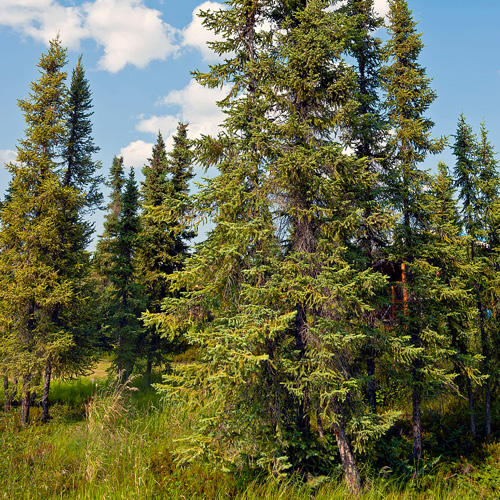Picea mariana

(1-99) $1.99
(100-999) $1.59
(1000+) $1.49
A small, slow-growing tree, up to 20 metres tall and 25 centimetres in diameter. It often has a characteristic cluster of branches at the top forming a club or crow’s nest. Needles are blue-green, short, stiff, and four-sided. The needles are arranged in all directions along the twig or mostly pointing upwards. Seed cones are small and purplish. The old cones hang on the tree for several years. Pollen cones are dark red. The bark is thin, scaly and dark greenish brown. It can tolerate poor growing conditions. It often occurs in pure groups of trees or with lodgepole pine and white spruce. It is frequently found in cold, poorly drained areas, such as swamps and bogs, along with sphagnum mosses and horsetails. Lingonberry and Labrador tea are also plentiful. Black spruce forests are rich in wildlife. Moose, muskrat, and mink are numerous, and many birds eat the abundant insects in these wet, boggy areas.